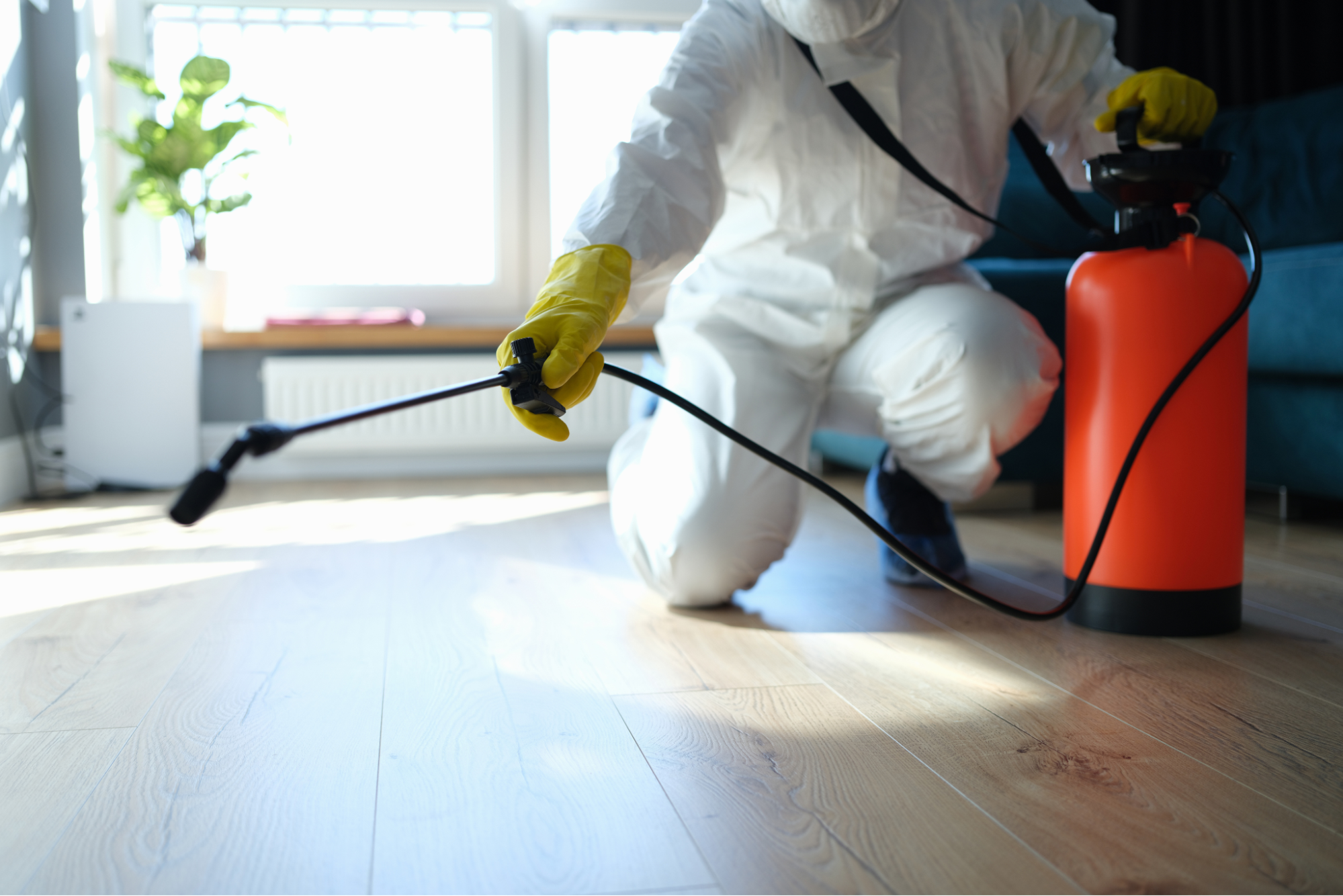Specialist A1 Charlotte Bed Bug Exterminator - High Quality Solution Guaranteed
Specialist A1 Charlotte Bed Bug Exterminator - High Quality Solution Guaranteed
Blog Article
Bed Pest Treatment Failure: Comparing Chemical Vs. Non-Chemical Solutions
In the world of bug control, specifically when managing the relentless problem of bed insects, the choice in between chemical and non-chemical treatment solutions can be an essential one. Both methods provide unique benefits and disadvantages, influencing aspects such as efficiency, safety factors to consider, and overall price. By analyzing the nuanced information of each method, a clearer understanding of which path to seek in resolving a bed insect invasion can be achieved.
Performance of Chemical Treatments
Chemical treatments for bed pest infestations have actually been extensively identified for their fast and potent efficiency in eradicating these parasites. When thinking about the effectiveness of chemical treatments, it is critical to comprehend that they can provide a quick and comprehensive service to a bed bug trouble.
Moreover, chemical therapies have the benefit of offering recurring results, implying that they can remain to get rid of bed bugs also after the preliminary application. This recurring action is specifically beneficial in combating any type of potential re-infestations. Additionally, the quick action of chemical treatments can bring relief to people facing severe bed insect invasions, permitting them to reclaim control of their home promptly.
Safety And Security Interest In Chemical Solutions
When using chemical remedies for bed insect treatment is guaranteeing the safety and security of residents and the atmosphere,One critical aspect that needs mindful factor to consider. While chemical therapies can be efficient in eradicating bed bugs, they may position risks otherwise handled effectively. Among the primary security issues with chemical options is the potential injury they can trigger to human health. Direct exposure to particular chemicals made use of in bed insect therapies can bring about breathing concerns, skin irritability, or various other negative responses, specifically in individuals with pre-existing conditions or sensitivities. Additionally, incorrect application or dose of chemical pesticides can lead to hazardous deposits remaining in the cured location, posing long-term wellness risks to owners.
Additionally, the ecological impact of chemical solutions is an additional considerable consideration. Some chemicals used in bed pest therapies might be hazardous to advantageous pests, wild animals, and ecosystems if they seep into the soil or water supply. It is important to use chemical treatments carefully, adhering to security guidelines, and thinking about less poisonous alternatives to minimize these risks and ensure the safe and reliable monitoring of bed pest infestations.
Advantages of Non-Chemical Techniques
Thinking about the potential safety and security problems and environmental impact associated with chemical services for bed insect therapy, discovering non-chemical methods presents a promising alternative with several distinct advantages. Non-chemical treatments are environmentally friendly, as they do not contribute to air or water contamination, making them a sustainable choice for pest control.
Furthermore, non-chemical services can be efficient in targeting bed insects, including hard-to-reach areas where chemical therapies might not permeate. Methods such as warmth treatment, vacuuming, heavy bedbugs steam cleaning, and cushion encasements offer complete obliteration without making use of dangerous chemicals. Moreover, non-chemical methods can be less disruptive, needing marginal prep work and enabling quicker reentry right into dealt with areas. In general, choosing non-chemical bed insect therapy techniques not only prioritizes security and environmental security however additionally guarantees efficient and comprehensive parasite control.
Limitations of Non-Chemical Treatments

Furthermore, non-chemical therapies usually need multiple applications to achieve successful elimination. This can be taxing and might not constantly assure full removal of all bed pests and their eggs, particularly in hard-to-reach or hidden areas.
In addition, the success of non-chemical treatments heavily depends on proper execution and thoroughness, which can be testing for individuals without expert expertise. Inadequate application of non-chemical methods may cause incomplete eradication, leading to persistent infestations and the need for added treatments.
For that reason, while non-chemical treatments have their advantages, it is essential to acknowledge these restrictions and consider them when identifying the most efficient strategy for taking care of bed insect infestations.
Price Comparison: Chemical Vs. Non-Chemical Options
Offered the limitations related to non-chemical therapies, a vital element to evaluate in the context of bed pest monitoring is the expense comparison in between chemical and non-chemical alternatives. Chemical therapies usually include the application of pesticides by experts, which can range from $250 to $900 per room, depending on the seriousness of the problem and the dimension of the location to be treated. On the other hand, non-chemical therapies like warmth therapy or heavy steam can be a lot more costly, with prices varying from $1,000 to $6,000 for a whole home. While the eliminating rats first cost of chemical therapies may appear reduced, several treatments may be called for to fully eliminate the invasion, potentially raising the total expense. On the various other hand, non-chemical alternatives might supply an extra sustainable and green remedy, although they can be cost-prohibitive for some people. Eventually, when taking into consideration the price of bed pest treatment choices, it is essential to weigh the upfront costs against the efficiency and long-lasting sustainability of the chosen approach.
Final Thought

Thinking about the prospective safety and security problems and environmental impact linked with chemical solutions for bed pest treatment, discovering non-chemical methods provides a promising option with several distinct benefits.Provided the limitations connected with non-chemical treatments, an essential facet to examine in the context of bed pest management is the price comparison between chemical and additional hints non-chemical alternatives. In comparison, non-chemical treatments like heat treatment or heavy steam can be a lot more pricey, with costs ranging from $1,000 to $6,000 for an entire home. While the preliminary expense of chemical treatments might appear reduced, numerous therapies might be needed to totally eliminate the invasion, potentially enhancing the total price.In final thought, when contrasting chemical and non-chemical bed pest therapy alternatives, it is vital to take into consideration efficiency, safety, advantages, constraints, and expense.
Report this page